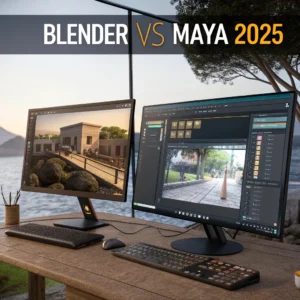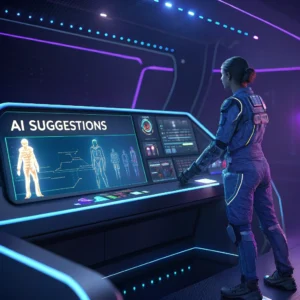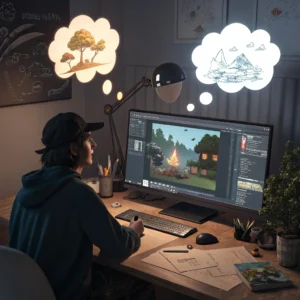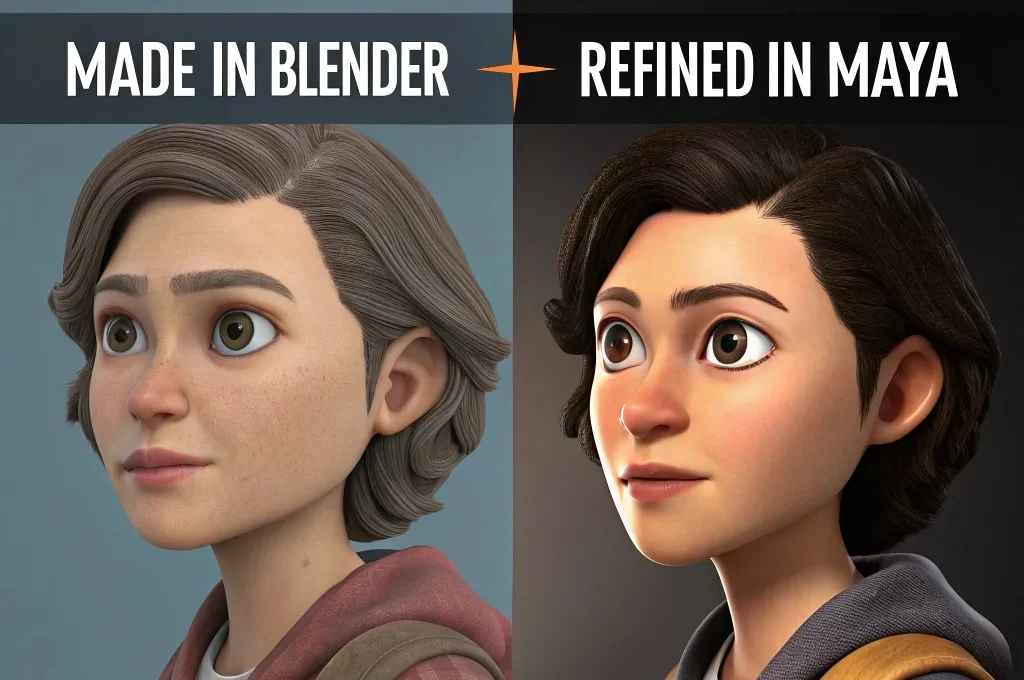In 2025, 3D software is used in many areas—like animation, video games, architecture, and virtual reality. Whether you’re a beginner, a freelancer, or working in a professional studio, choosing the right tool is important.
Two of the most popular options are Blender and Autodesk Maya. Both are powerful, but they are built for different kinds of users and projects.
In this blog, we’ll compare Blender and Maya to help you decide which one is the better fit for your needs.

Overview of Blender and Autodesk Maya
What is Blender?
Blender is a free, open-source 3D software developed and maintained by the Blender Foundation. It’s known for being a complete solution for 3D production, supporting modeling, sculpting, animation, rigging, rendering, simulation, compositing, motion tracking, video editing, and even 2D animation using Grease Pencil.
Blender is widely used by freelancers, indie developers, students, and hobbyists due to its accessibility and strong community support. Many small studios prefer hiring a Blender artist for hire when quick and cost-effective asset development is needed.
Whether you’re prototyping game assets or creating animations for a mobile app, a Blender artist for hire can help streamline your process without the overhead of an in-house team.
What is Autodesk Maya?
Maya is a professional 3D software developed by Autodesk. It is widely used in animation and VFX studios for its strong rigging, character animation, and simulation tools. Maya integrates well into professional production pipelines and is trusted by studios for large-scale cinematic and gaming projects.
Its high-end capabilities are why many production teams prefer to hire dedicated rigging artists who specialize in Maya to ensure precision and efficiency in character setup.
Feature Comparison: Blender vs Maya in 2025
| Feature | Blender | Autodesk Maya |
|---|---|---|
| License Type | Free, Open Source (GPL) | Commercial License (Paid) |
| Cost | Free | ~$1,950/year (free for students/educators) |
| User Interface | Simplified, user-friendly, customizable | Advanced, optimized for professional workflows |
| Modeling Tools | Strong modeling and sculpting tools | Advanced precision and procedural modeling |
| Animation Tools | Good for indie and 2D/3D animation | Industry-leading character animation & rigging |
| Rendering Engines | Eevee (real-time), Cycles (path tracing) | Arnold (physically based, cinematic rendering) |
| Simulation | Cloth, smoke, fluid (basic to intermediate) | High-end simulation tools for VFX production |
| Scripting | Python, large plugin community | Python and MEL, studio-ready pipeline scripting |
| Game Engine Integration | Excellent support for Unity, Unreal | Supported via plugins and FBX/USD workflows |
| Updates | Frequent, community-driven releases | Annual major updates, slower iteration cycle |
| Learning Curve | Easier for beginners | Steeper, better suited for professionals |
| Community & Support | Open-source community, vast tutorials available | Professional support, strong documentation |
AI Integration in 3D Production Software
Artificial Intelligence (AI) is transforming 3D content creation by simplifying complex tasks, increasing efficiency, and enabling new creative possibilities. Both Blender and Maya have embraced AI technologies, though in different ways.
Blender
While Blender does not have built-in AI tools, its open-source architecture allows the development of third-party AI plugins and add-ons. In 2025, notable advancements include:
- AI-assisted auto-rigging and pose detection tools
- Generative texture creation via machine learning
- AI-driven lighting and rendering optimization
- Add-ons for converting 2D sketches into 3D models
When deadlines are tight, many studios prefer to collaborate with a blender artist for hire who understands AI-driven production enhancements.
Maya
Maya benefits from Autodesk’s continued investment in AI-driven features. Built-in functionalities include:
- Automated facial animation and lip-syncing tools
- Machine learning-based skin weighting and rig placement
- Predictive simulations for cloth, particles, and fluids
- Integration with Autodesk’s AI-powered cloud services
Studios working on narrative-driven content often hire dedicated rigging artists to take full advantage of Maya’s automated weight painting and facial setup systems.

When to Use Both Blender and Maya Together
In many production pipelines, professionals use both Blender and Maya to leverage their respective strengths. This hybrid approach enables a more flexible and efficient workflow.
Common Workflow Scenarios:
- Asset Creation in Blender → Animation in Maya: Use Blender’s fast and lightweight modeling tools for asset creation, followed by Maya’s powerful rigging and animation systems for character motion.
- Previsualization in Blender → Final Rendering in Maya: Utilize Blender’s Eevee engine for rapid previews, then export scenes to Maya for cinematic rendering with Arnold.
- Collaboration Between Teams: Freelancers or contractors working in Blender can export assets in FBX or USD format for seamless integration into Maya-based studio pipelines.
For instance, a studio may hire 3D animator in USA for Maya-based cutscenes, while a remote team member creates environments using Blender. This split allows teams to work in parallel while maintaining quality and consistency.
Choosing the Right Tool for Your Needs
The ideal choice between Blender and Maya depends on your professional objectives, budget, and project requirements.
| User Type | Recommended Software |
|---|---|
| Students and Beginners | Blender |
| Independent Creators and Freelancers | Blender |
| Animation and VFX Professionals | Maya |
| Game Developers (Indie and AAA) | Blender or Maya (project-dependent) |
| Studio Production Teams | Maya |
| Hybrid Workflows and Pipelines | Both |
For individuals who are beginning their journey in 3D or working independently, Blender offers an unparalleled combination of power and accessibility. For those seeking to work in professional studios or large production environments, learning Maya remains essential.
Growing studios frequently hire 3D artists in USA to bring in on-demand talent who are skilled in both Blender and Maya, depending on the stage of production.

Conclusion
Blender and Maya are both powerful tools in 2025, but they serve different purposes. Blender is a great choice for those who want an all-in-one, free solution that’s flexible and constantly improving. Maya is better suited for professionals working in animation, film, or large game projects that need advanced features and studio-level workflows.
For game assets, environment design, or realistic renders, many developers choose to hire 3D artist in USA who can work within either Blender or Maya depending on project requirements.
At Gamecrio Studios, we help studios, developers, and creators bring their ideas to life using both Blender and Maya—backed by a skilled team of 3D artists, animators, and rigging specialists.
If you require any assistance with 3D modeling, animation, rigging, or end-to-end game asset production, please don’t hesitate to contact us. Our team is ready to support your next project.
Let’s turn your vision into reality.




